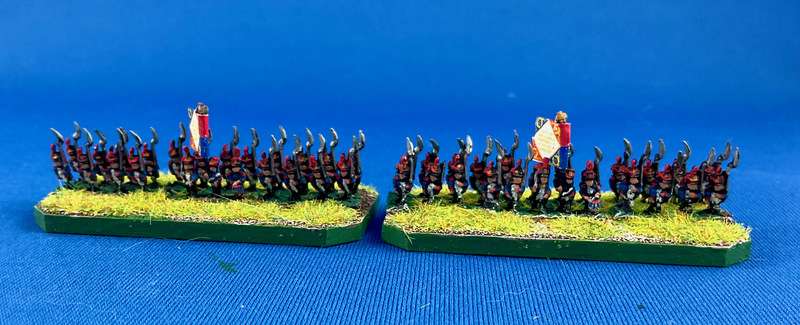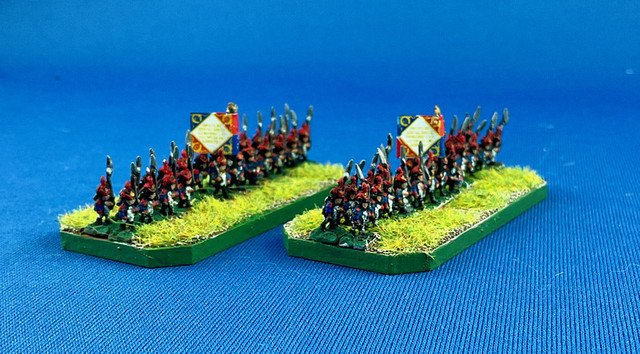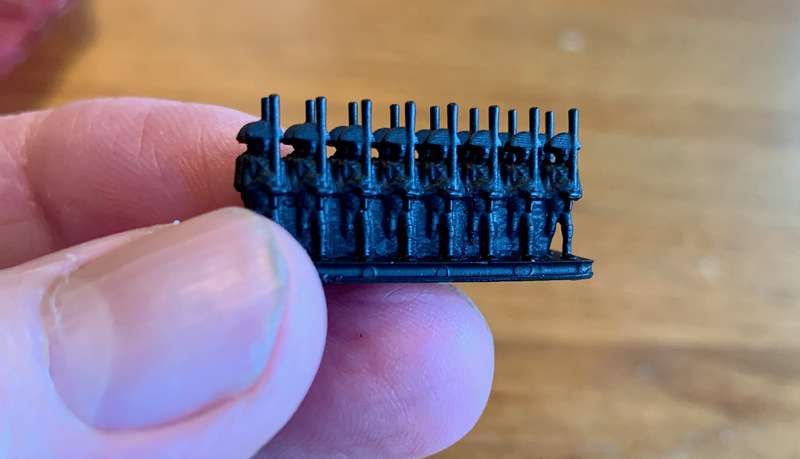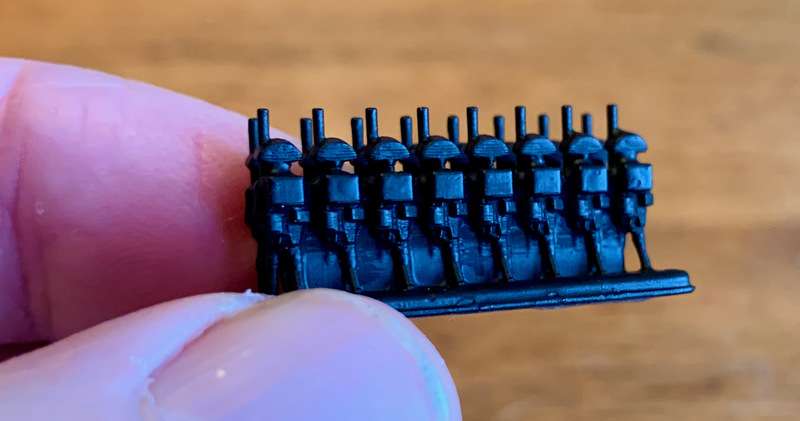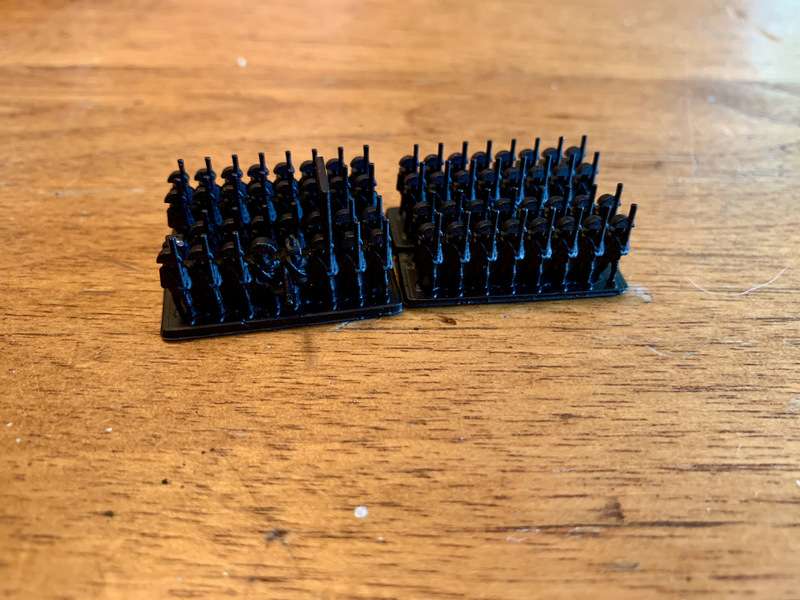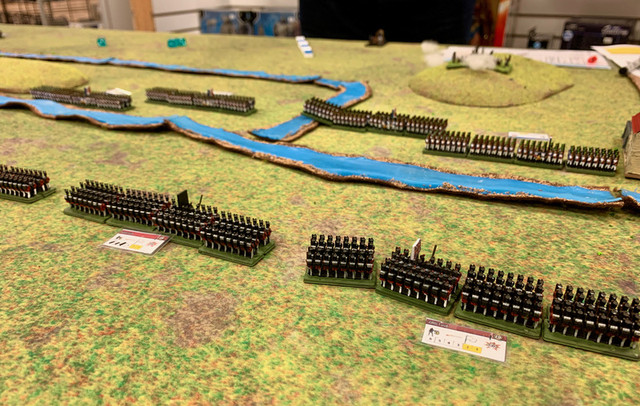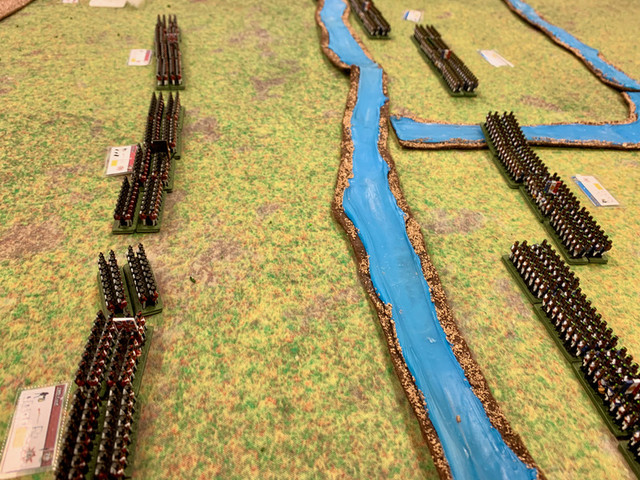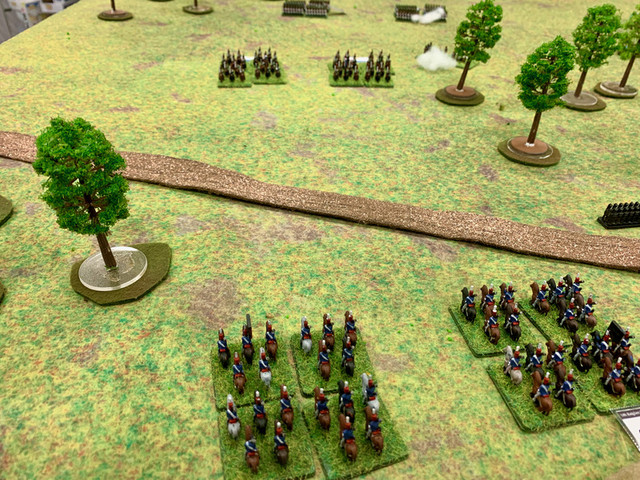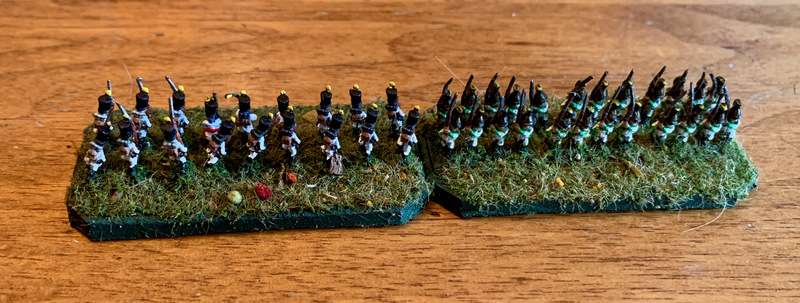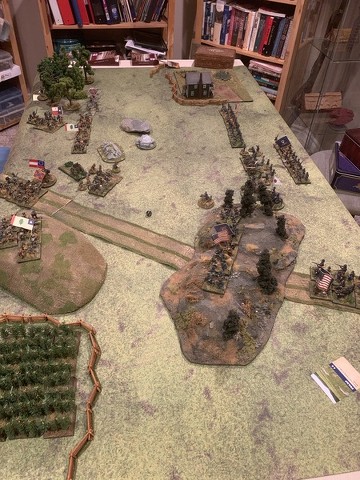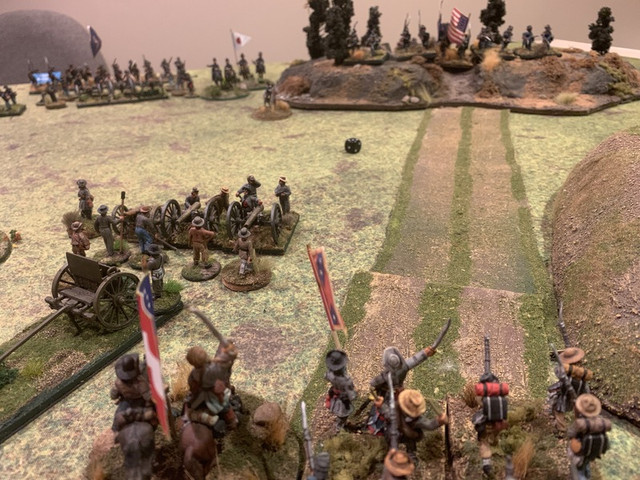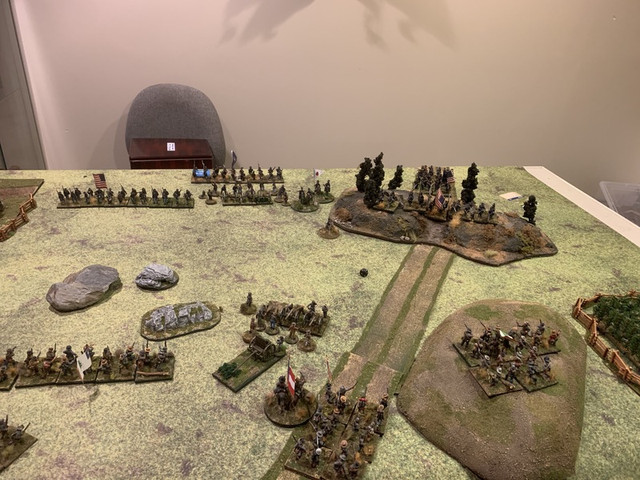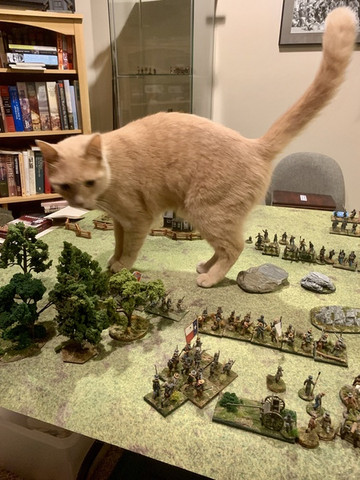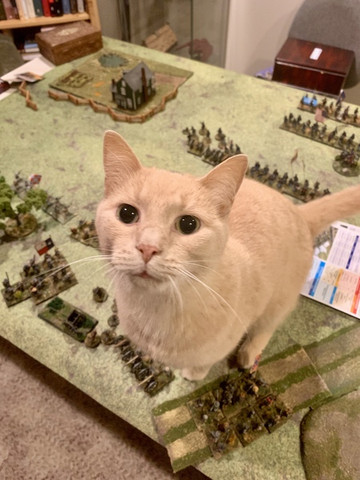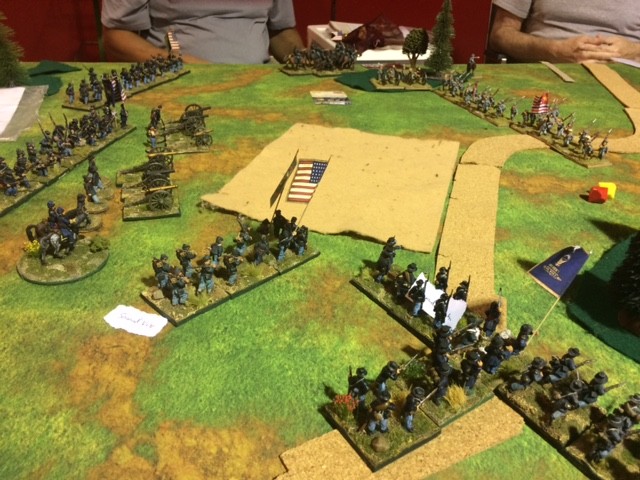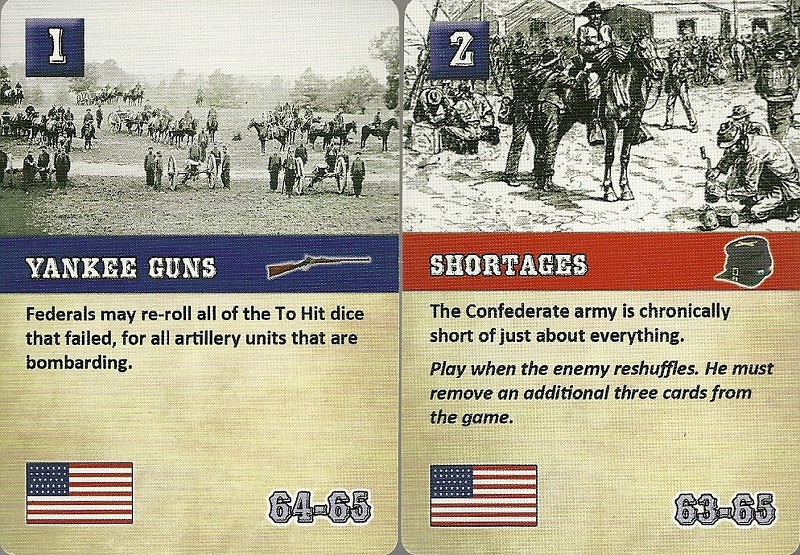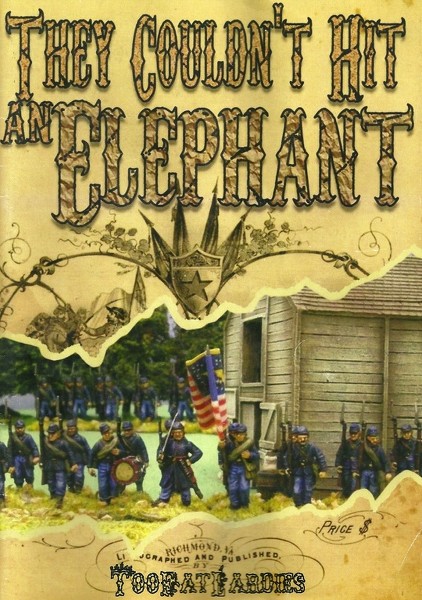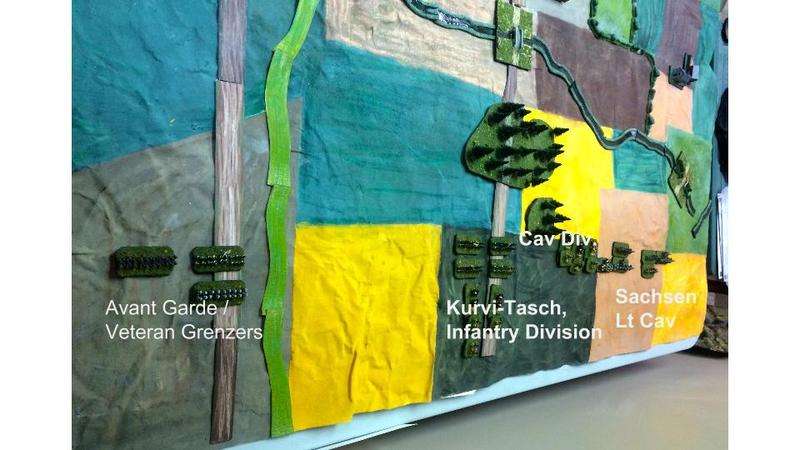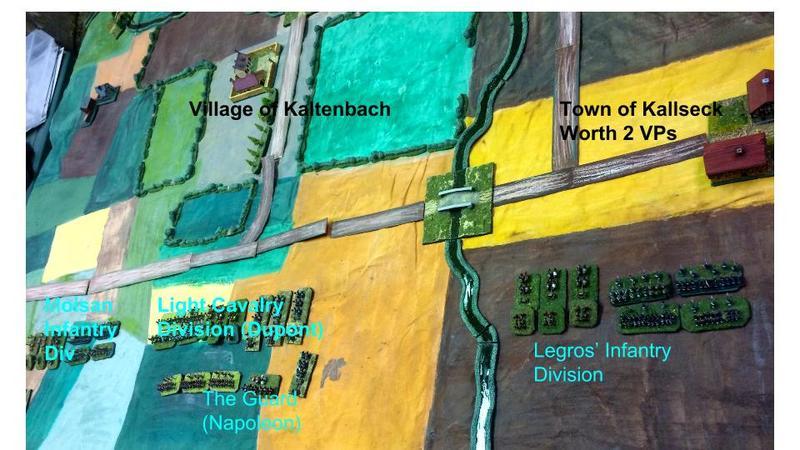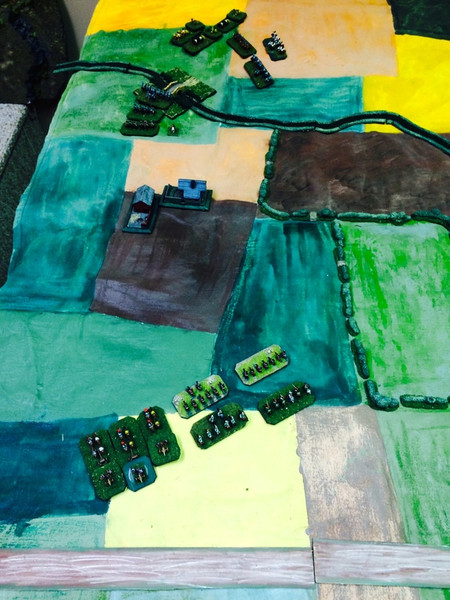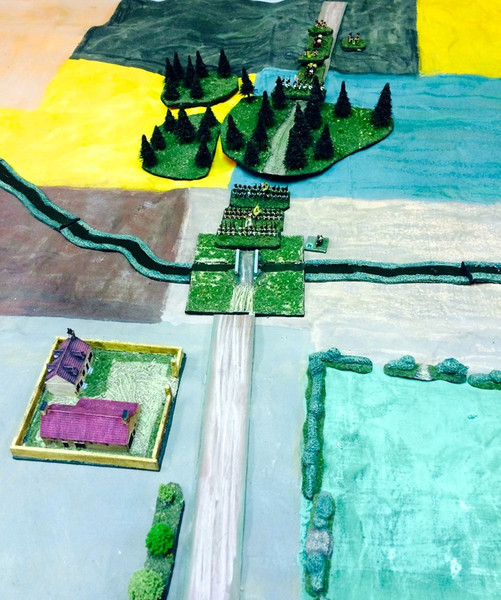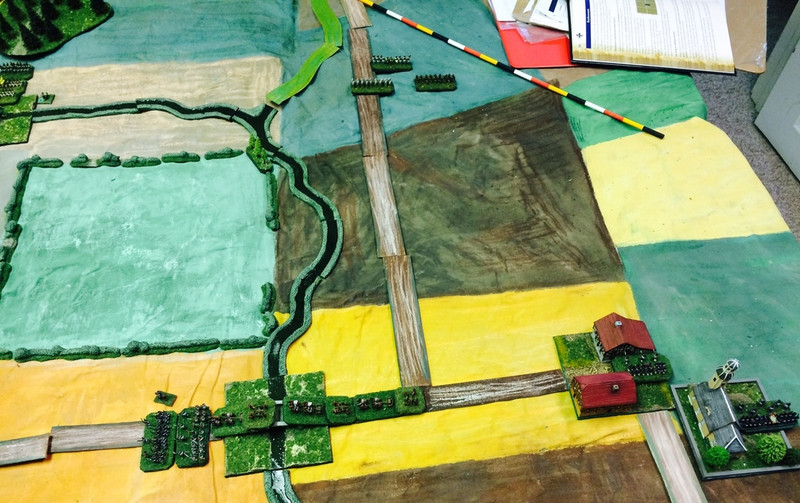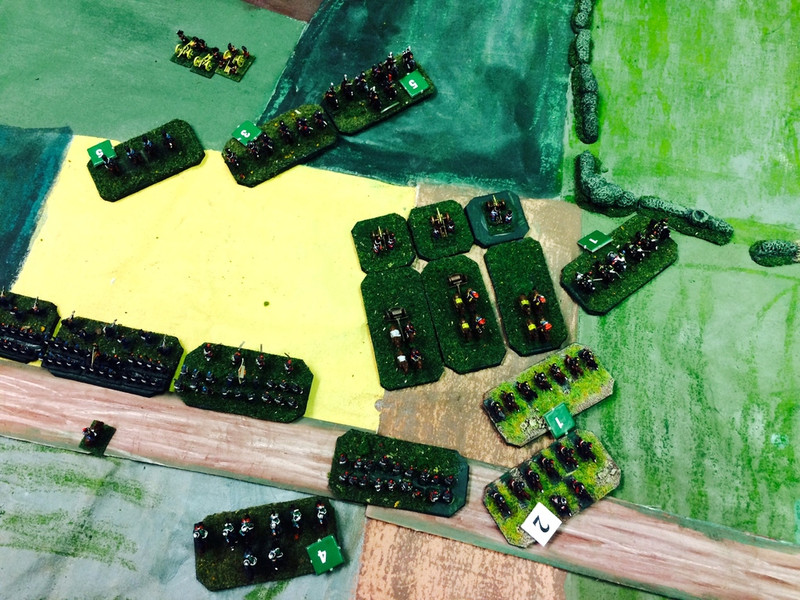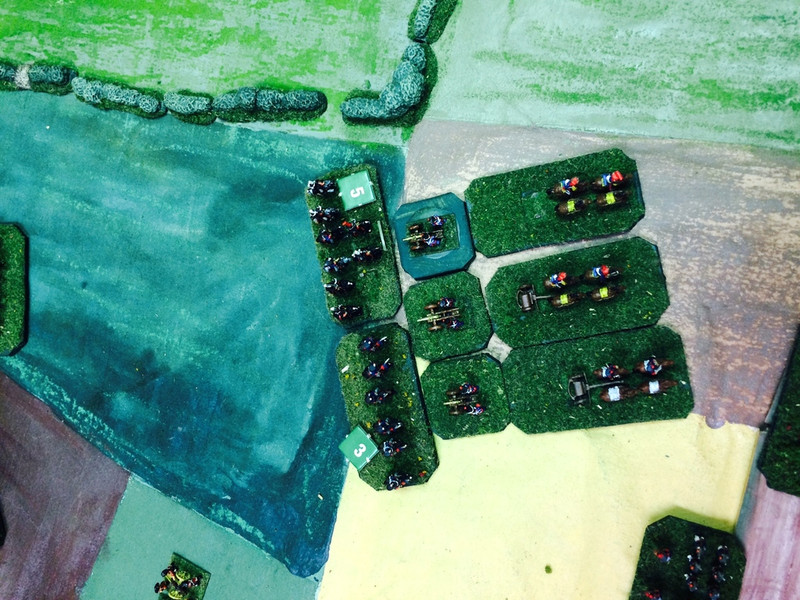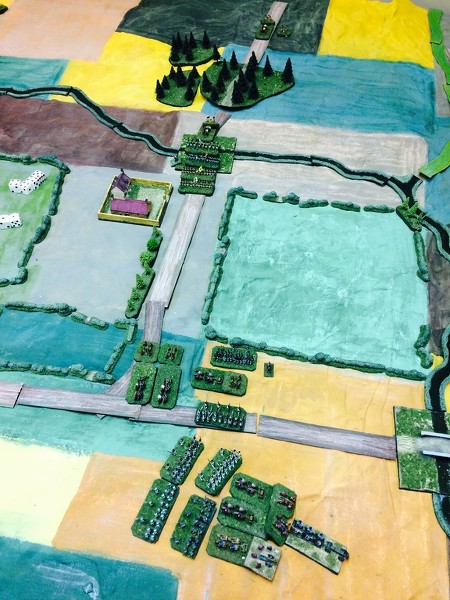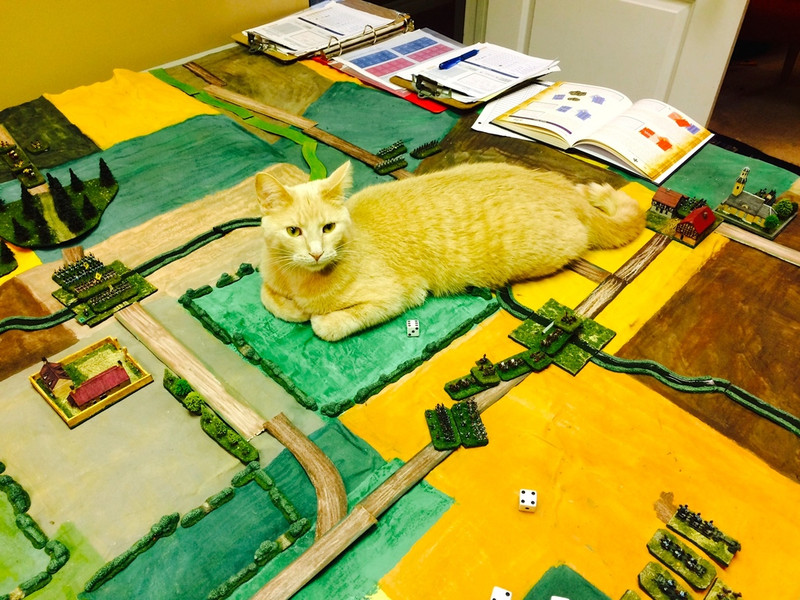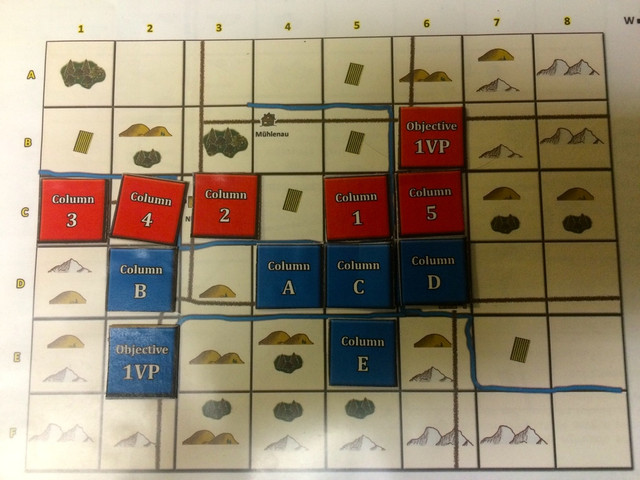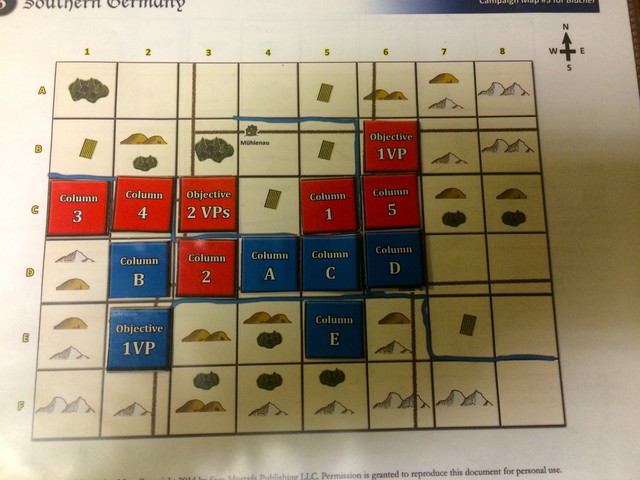Hello friends and welcome back to the blog, which appears to have drifted unhelmed into the second week of February. Th usual apologia of being preoccupied, particularly with painting some entries for this year’s running of the Analogue Hobbies Painting Challenge. You can find my entries here (28mm Foundry Victorian civilians and 6mm Baccus Napoleonic French), here (15mm Darkest Star SF troopers shown here last month), here (Victrix ancient Germans), here (first 3D printing efforts), and here (more Victrix ancient Germans).
In the last month, my podcast partner James and I have managed to put out Episode 11 of the Canadian Wargamer Podcast (more to say on that in another post) and I’ve done some terrain work, as well as jumped into the 3D printing world, of which, more at another time. So it’s been a productive month, at the cost of my blogging.
During this last month, I was introduced to Sam Mustafa’s LaSalle (2nd ed) Napoleonic rules, which could be described as the tactical cousin to Sam’s operational rules, Blucher. I think that’s a reasonable comparison of the two. After a brief play of a few turns at the local FLGS, I decided to try them at home as an excuse to spend more time with my 6mm Naps collection. I decided on the first scenario in the LaSalle rules, “Les Avant-Gardes”, a shortish (10 turn) meeting engagement game.
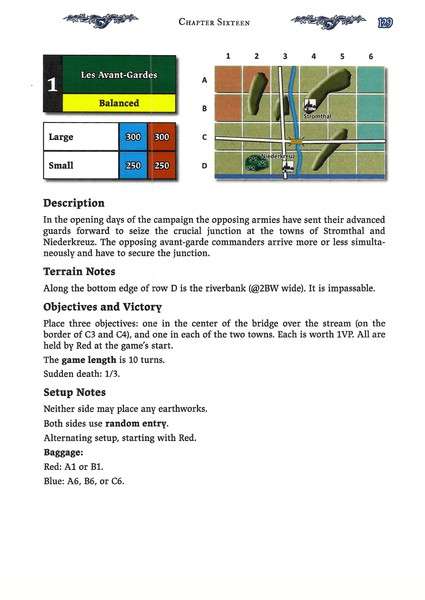
Here are the opposing forces at en Turn 1. I chose two 300 point forces. Austrians (right) have a large Avant-Garde brigade featuring two light cavalry units, one horse and one foot battery, and 6(ish) infantry regiments of mixed quality, and a second brigade of three dragoon (shock or heavy cavalry) regiments along with a horse battery. The French (left) have a light cavalry brigade of three regiments and a horse battery, an infantry brigade (six regiments, mixed quality, and a foot battery) and a second heavy cavalry regiment of three dragoon regiments. The Austrians start by owning the bridge in the centre and the two towns of Stromthal (top) and (Niederkreuz (bottom).
The Austrians got to go first, and thus got the jump on getting to the bridge at the end of turn 1 with a Hussar and Uhlan regiment, and horse artillery coming up in support. The large French infantry brigade realizes that it has to 1) check the enemy cavalry at the stream and 2) try to reinforce the cavalry to contain the Austrians at the bridge.
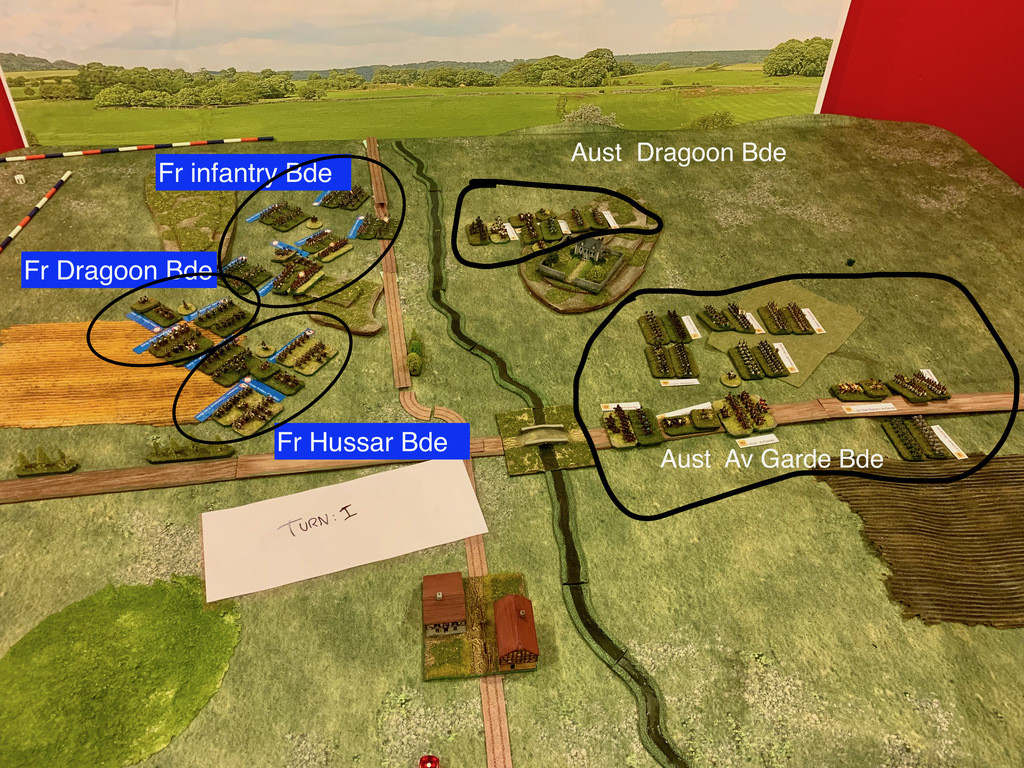
I had a slight dilemma with my basing, as my 6mm figures are all based on single stands in line formation, which works well enough in gams like Blucher or General d’Armee where one stand = one unit and it’s easy to assume that the unit is in the best formation for the situation (Blucher is especially good at this). However, LaSalle calls for units to be composed of four stands, to represent column of march (the stands in a row of 1 wide and four long), mass (stands ranked two by two), line (four abreast) or if infantry square (two by two but each stand facing out in a different direction). I attempted to split the difference by using two stands to represent one unit, though since all unit enter the game in column of march, I had to make notes on each unit label to determine when a unit had changed formation into the more tactically useful mass formation. Square (back to back) and line were much easier.
At the end of Turn II, the Austrian dragoons and French infantry regard each other on either side of the stream at the top. The French have gotten one of their two elite infantry into line to face the advancing mass of Austrian infantry. Austrian hussars and uhlans have made it across the stream and the French light cavalry are shaking out to meet them.
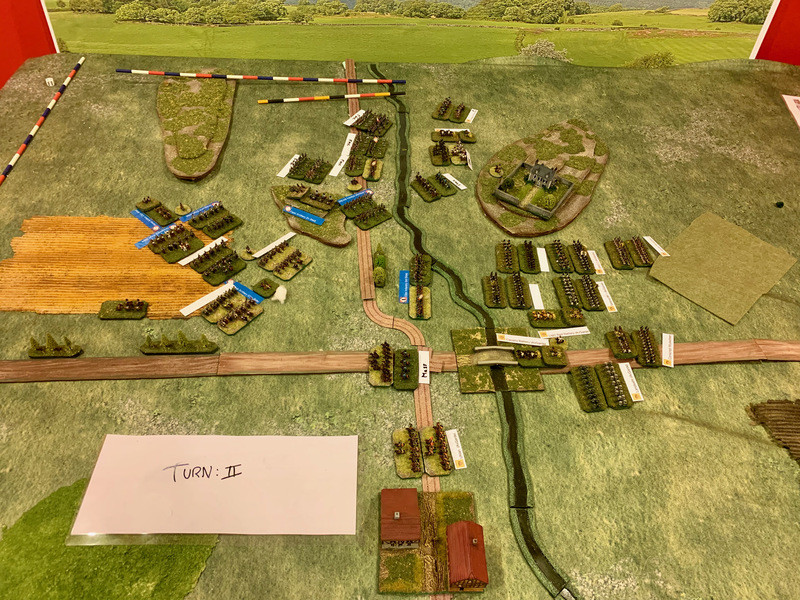
First clash, French and Austrian light cavalry slam into each other. In this case, the melee is inconclusive, just an opening skirmish, but generally in LaSalle cavalry units in melee seem to have a much better chance of winning decisively or breaking and being removed from play if the melee goes poorly. It forces the player to think carefully before committing the cavalry. All of these stands except fo the one on the right are Baccus figures, painted by me in the last few years, and I’m quite pleased with the result.
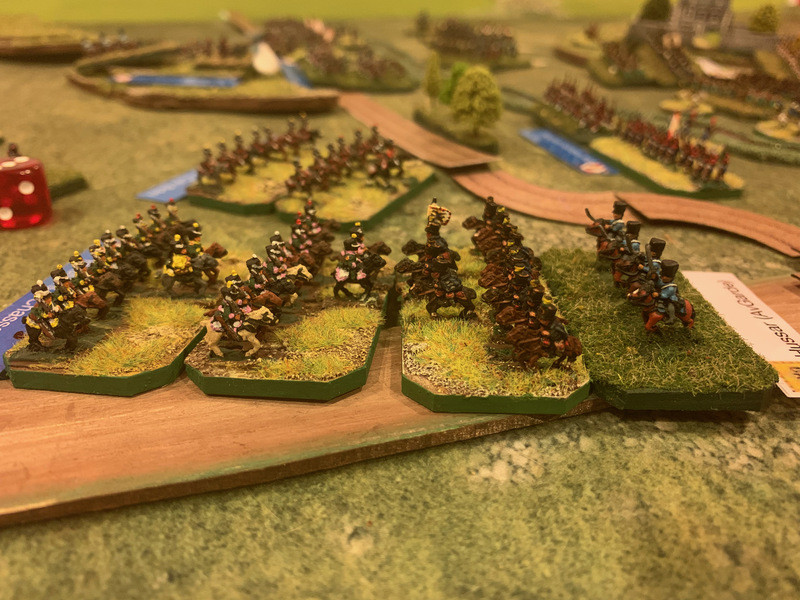
At the end of Turn 3, on the French side (blue circle), note:
#1 All three regiments of the light cavalry brigade are now deployed against the Austrian bridgehead after the first inconclusive clash. This should give the French a melee bonus for outnumbering the enemy in the next turn.
#2 Three regiments of the infantry brigade are now in square. This was a special formation change chosen at the start of the turn in the Intervention Phase. Players at the start of their turn can choose to set their commander aside to intervene on the battlefield and make an emergency formation change for any friendly unit within 4 base widths of the CinC figure. The upside is that this formation change does not cost a Momentum Point (MP), which in Lasalle is basically an initiative point, one of a limited amount of credits which allow you to do things during the turn. If the CinC isn’t set aside for the Intervention Phase, he can be used to generate between 1-3 MPs for use during the turn.
#3 You’ll se a single figure circled here. That’s a brigade commander, but in light of what I just said in #2, I discovered that in the Basic Lasalle rules, one doesn’t need sub-commanders, their function is factored into the number of MPs you get per turn. Each player starts wit 1 MP for each brigade on the table (representing the initiative of sub-commanders, I guess), then 2 MPs for the HQ (the base area behind each army, not represented in this battle) and then between 1-3 MPs (1d6 roll) if the CinC is not set aside in the Intervention Phase.
On the Austrian side (white circles), note in the photo below:
#1 Light cavalry of the Austrian Avant-Garde Brigade, Hussars at the top and Uhlans below, and their horse artillery moving into position. The unit crossing the stream behind the Uhlans is the Av-Garde Landwehr infantry regiment, which has orders to get into the village of Nieuderkreuz and get comfy there.
#2 Lead infantry regiments (Grenz and Jaeger) regiments of the Av-Garde brigade are in mass formation and are trading volleys with th French elite infantry regiment holding the far side of the crew. Note that all three regiments have little circular stands in front of them. These are skirmish stands. In Lasalle, an infantry regiment in Line or Mass formation can deploy skirmishers, which have a variable value (all French skirmish stands have a value of 3, Austrian Grenz and Jaeger value 3, Austrian line value 2). During the Skirmish Phase at the start of each turn, both players total the value of their skirmish stands and roll d6 = total skirmish value, counting “6s”. Players get a Momentum Point for every 2 sixes rolled, and the player with more sixes gets the initiative next turn. The French were doing fine with skirmish points until their regiments started going into square and lost their skirmish capability. This is a nice feature of the rules, that the ability of infantry to dominate the battlefield can be denied in the face of a cavalry threat.
#3 (white circle, blue number, top) the three Austrian cavalry regiments face off against the French infantry across the creek in what will become an ongoing standoff. The Austrian horse artillery have unlimbered and are bombarding the French, but in LaSalle artillery is not overwhelming. It can chip away a target’s cohesion over time, but it’s just one tool on the battlefield.
On the

Turn IV was rough on the French, seeing the Austrians draw first blood. In the photo below, note:
Austrian (white circles):
#1 Landwehr regiment gets comfortable in Nieuderkreuz, finds the tavern, and settles in. No one will trouble them for the rest of the battle. This cements 1 VP for the Austrians, assuming that the sudden death victory (five units lost on either side) isn’t invoked.
#2 Austrian Grenz and Jaeger units charge across the stream into the French elite infantry regiment in line, and rout it in combat, removing it from the table. In combat units get an advantage if they outnumber the enemy, but troop quality doesn’t enter into the combat factors, which are based on the modified strength of the unit plus a 1d6 die roll. Here the French just rolled badly. Another illustration of Momentum Points: it costs the Austrians 3 MPs to make that charge - 1 MP to move a Force (the Avant Garde brigade), 1 MP to charge, and 1 MP for a complication (crossing the stream). So 3 MPs out of the average total of 5-7 for each side per turn doesn’t leave a lot left over to do other things, but it worked out well for the Austrians.
#3 The Austrian Hussars and Uhlans team up to charge and route the centre French hussar regiment. French have now lost two units - they lose there more and it’s an Austrian Sudden Death victory.
French (blue circle) #1: a fourth infantry unit has to go into square versus the Austrian dragoons. These are mere conscripts, but they will (spoiler alert) turn out to be the stars of the battle. The conscripts are supported by the Foot Artillery battery on the hill behind and above them, which help anchor the French centre.
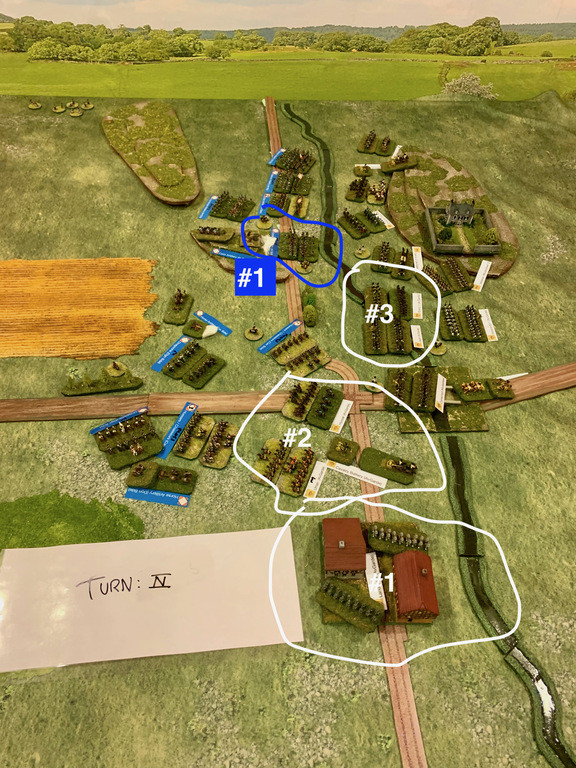
Action shot of the Austrian infantry charging across the stream to rout the French. In the foreground, another regiment of the Avant Garde brigade is crossing the bridge to expand the Austrian foothold on the far bank. It all looks rather grim for France.

At the end of Turn 5, French fortunes are restored somewhat. In the photo below:
French (blue circle) #1: The French hussars are also seeking MVP status. After being charged by their Austrian counterparts and handily defeating them, they are themselves free to charge the Austrian infantry crossing the bridge. The Austrians, alas, are caught in Mass, so they face a terrible Combat modifier for being in a Disadvantageous Formation and are annihilated. In LaSalle, infantry in square are surprisingly resilient in melee, provided that they aren’t exposed to too much incoming fire, which is how Napoleonic battles should work, I think.
Austrian #1: Now it’s the turn of the Austrian infantry to be pinned. With the victorious French hussars (Fr #1) on their flank, the Jaegers have no choice but to go into square, depriving their cohorts of the firepower they could bring to bear on the French centre.
Austrian 2#: As all the smoke along the stream in the centre top attests, the French squares are putting out as much musketry as they can. This fire, combined with that of the French supporting artillery, is starting to hurt the Austrian dragoons. One of the three dragoon regiments has withdraw to the top of the hill north of Stromthal to rally. In LaSalle, units start with varying numbers of strength points, which can be reduced by fire and melee combat, Units will break and rout if they run out of strength points, but the owning player can attempt to rally units, which offers a chance (better if the unit is better quality and better still if they unit is removed from musket range (4 BWs). A die is thrown for each strength point lost (LaSalle calls them Disruption Points, I think) and these can either be regained or permanently lost if the roll fails. However, a Rally attempt for a Formation (brigade) costs one of your precious MPs, so there’s an opportunity cost to rallying.
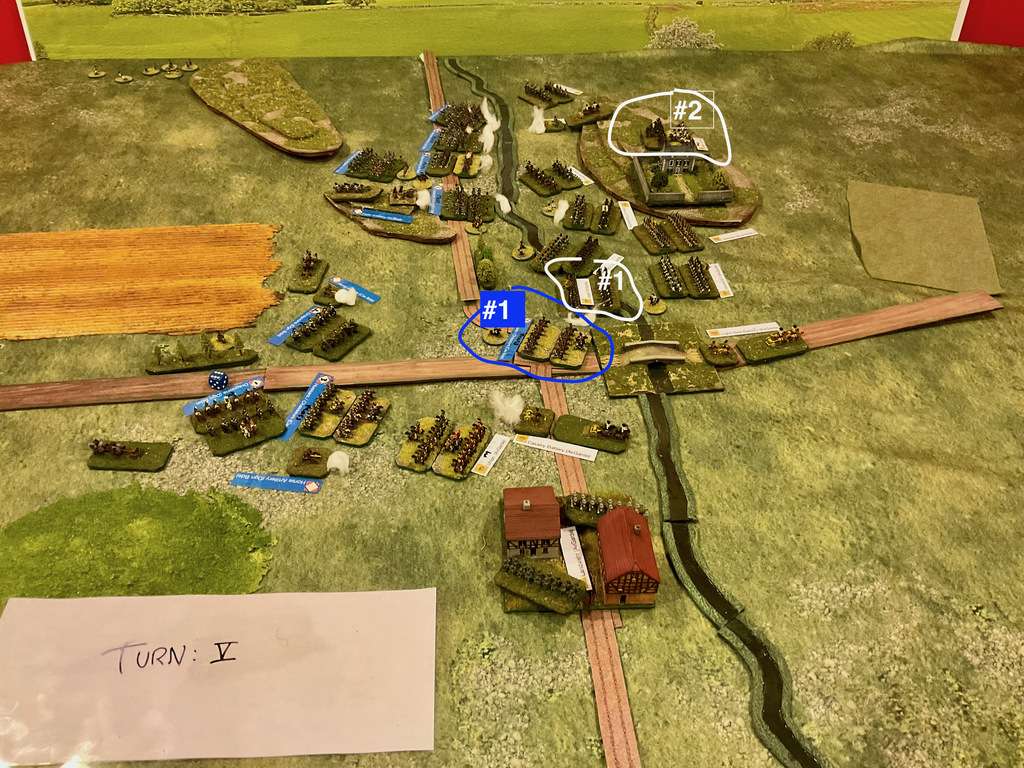
Went the day well for the Austrian battery now defending the bridge alone against the French hussars?
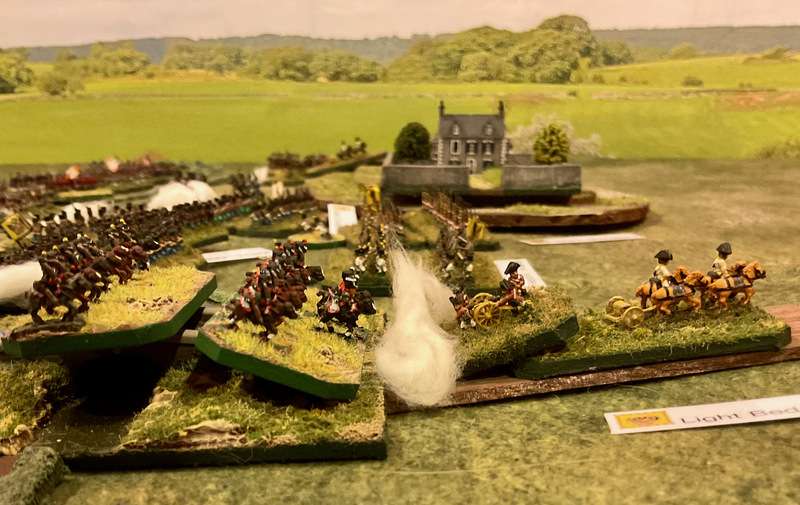
Not really. They got off one shot, then tried to limber and evade, failed, and were ridden down, taking the Austrians to three units lost.
End of Turn 6 and noteworthy below:
Austrian #1 The doomed Uhlans of the Av Garde Brigade gallantly face two French Dragoon brigades, which will sweep the Uhlans off the table in Turn 7.
Aus #2 The Jaeger regiment could be pushing hard in the centre, but having learned from the bridge debacle that infantry not in square are delicious morsels for enemy cavalry, it now finds itself in square, where its superior musketry only gets one d6 per facing of the square, meaning that it can do very little.
Meanwhile, the two Grenz regiments and the dragoons take turns battering the French squares along the stream at top centre, with little to show except for slowly mounting casualties.
French #3 The French hussars, the surviving unit of the light cavalry brigade, find themselves across the river, having annihilated an Austrian infantry regiment and a foot battery. They’re a little depleted but they’ve done well for themselves.
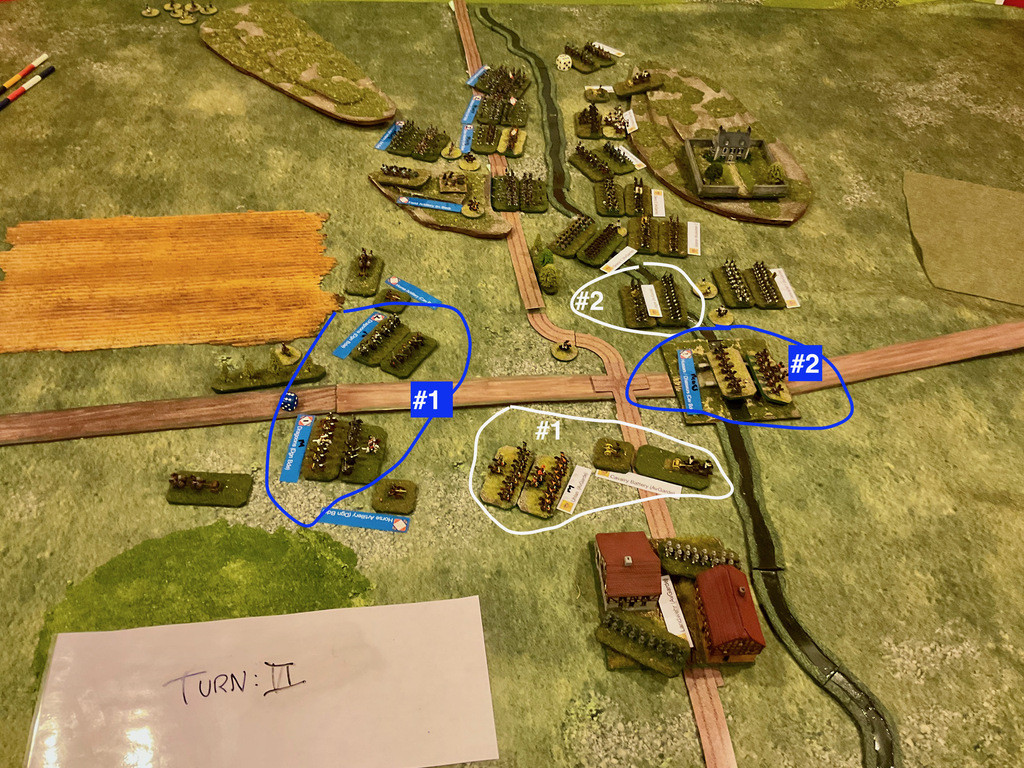
End of Turn 7 and noteworthy below:
Austrian #1: After the demise of their Uhlan colleagues (outnumbered 2-1 by the fresh French dragoons, they didn’t really have a a change, the Ave Garde Horse Artillery battery has limbered up and is bugging out. Now ith 4 units lost, the Austrians lose the game if they lose a fifth unit and that battery is easy prey for the two FR dragoon regiments facing it. The French hussars on the far side of the river have moved away to rally and regroup, so the horse gunners might have a chance of escaping.
Aus #2: The reserve infantry of the Av Garde brigade is now uselessly in square, facing the threat of the FR Hussars that have crossed the river.
Aus #3: Momentum points are being burned as the Austrian dragoons throw themselves at the French squares, and the two Grenz units vainly try to dislodge the (FR #1) conscript square in the centre, It just won’t budge! Meanwhile, the FR artillery on the hill in centre is steadily chipping away at the weaker of the two Grenz regiments. Finally, the Jaegers on the bottom of the #3 circle have gone back into Mass formation and have moved forward, hoping for a shot at driving the French artillery off the hill in the centre.
FR #1: Fighting off charge after charge, their ranks thinning but unbowed, the French conscript infantry in square in the centre continues to defy the odds.
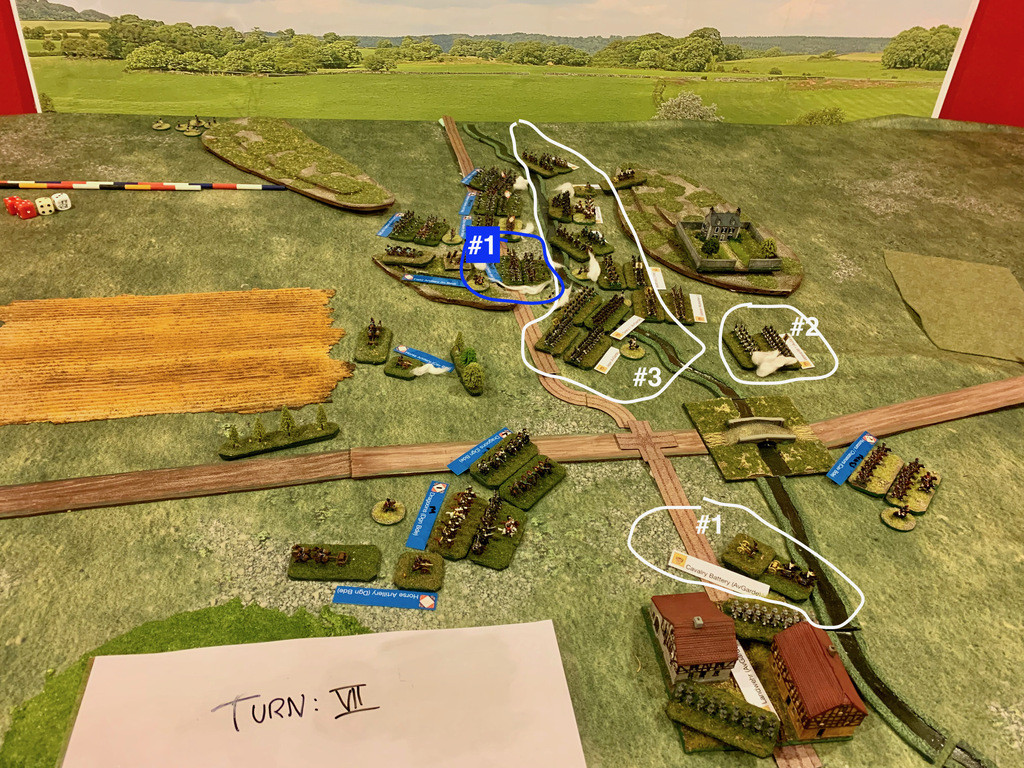
At the end of Turn 8, things are very tense and it’s going to go well or poorly for the Austrians in the next turn.
Aus 1: Hoping to contest the bridge, a regiment of conscripts from the Av Garde brigade crosses the river and forms square facing the French horse. Meanwhile, the Austrian horse artillery has safely escaped and is out of the fight. The Landwehr in the village are just happy someone else is fighting the battle.
Aus 2: The Jaeger regiment, in mass formation, is heading straight for the French battery on the hill. They are within the 4BW charge range of the French dragoons to their left flank, and if the French charge first, the Jaegers are kaput. It will depend on who goes first. Meanwhile, the mass of Austrian dragoons and the two Grenz units are hoping to finish the French conscripts in the centre, which, if the Jaegers do their job, takes the French to 5 units lost and sudden death.
Fr 1: The French dragoon brigade has wheeled and is ready to charge.
Fr 2: The hussars, out of frame, are rallying this turn. With all the nearby infantry in square, they might just make a run at the village of Stromthal behind the Austrian centre and take the Victory Point.

Austrian disaster! With the initiative, the French spend a MP for a volley command, and fire the artillery across the heads of the conscripts and into the weaker of the two Grenz regiments directly to the front of the French guns. Three hits and each one a kill! The Grenz regiment only has three strength points left, and it’s gone. French victory!
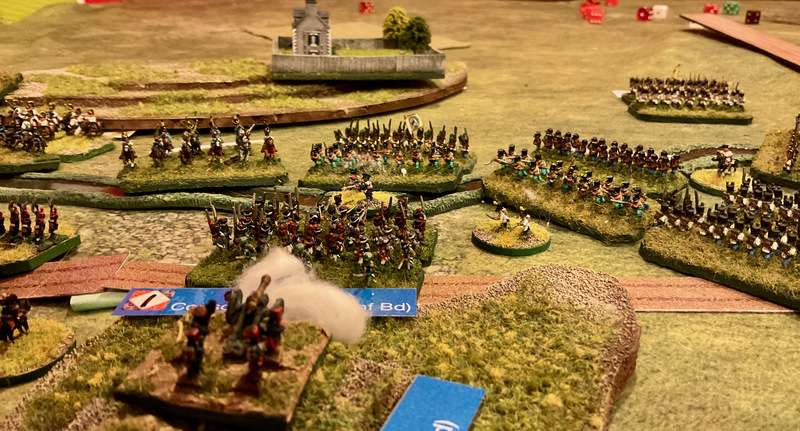
Final dispositions.
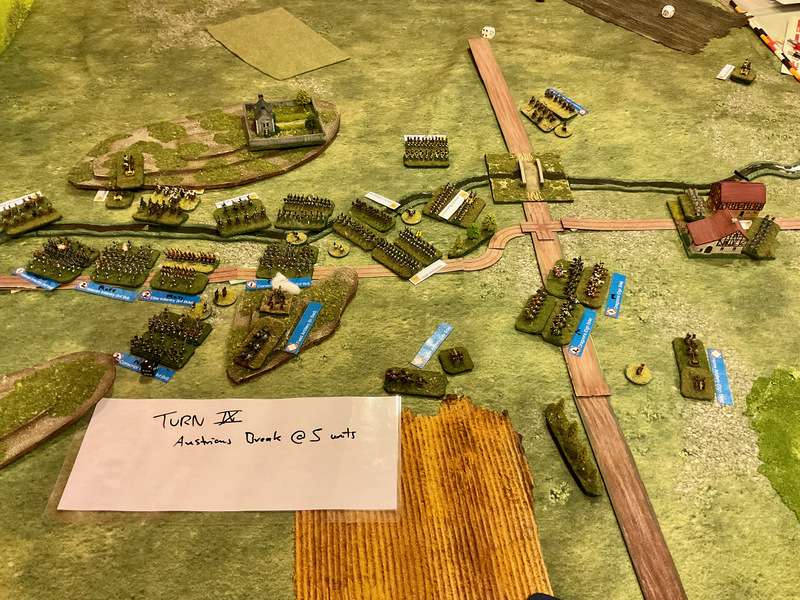
I ended the game with a very favourable impression of these rules. As with other Sam Mustafa rules I’ve played, the mechanisms aren’t overly complex, and the game feels playable and yet realistic enough and sufficiently “Napoleonic”. There is that “rock/paper/scissors” feel that you want with infantry vs cavalry, and as I noted earlier, artillery can have an impact (it was the cause of the French win) but is not overwhelmingly powerful.
What I enjoy most about it is the turn sequence. The opportunity to “interrupt” another player, which usually happens when units are within 4BWs, would require players to think hard about the best use of their Momentum Points before committing to an action that would give the opponent a riposte. The first time I played Lasalle was head to head and it certainly felt very tense.
Having just played the Basic game, it is several notches below TFL/Reisswitz’s General D’Armee in complexity. I will definitely try the second scenario in the rules along with some of the Advanced Rules. An added bonus was getting my 6mm figures back on the table, and that felt like a victory in itself.
Tell me how you liked this format for an AAR - did the numbers in the photos and the explanations in the text help you follow the battle?
Cheers and blessings to your die rolls.
MP+

